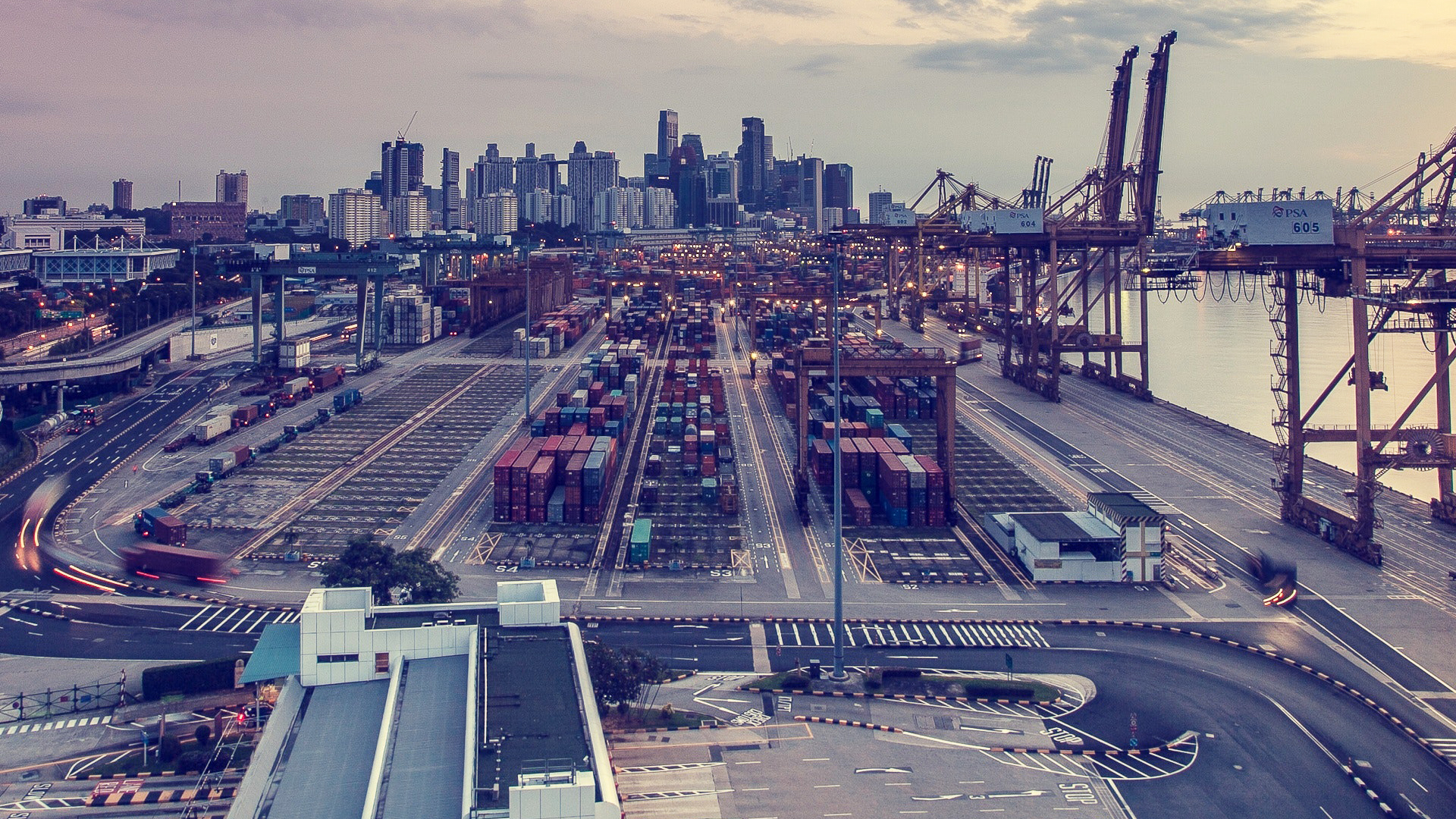The supply chain continues to be an ever-growing complex system that, just like precariously stacked dominoes, can be affected and disrupted by several things. Be it from transportation breakdowns (Suez Canal obstruction) or shortage of resources (global chip shortage), the chances of something that can impact a business’s supply chain system are correlatively rising.
With the gaps within businesses’ supply chains being evident, especially after the wake of the pandemic, it is obvious that supply chain leaders and CSCO will need to focus on resilience to overcome them.
As the Chief Supply Chain Officer for HEINEKEN, Magne Setnes shares with us his insights on why resiliency and financial understanding need to be the priority for organizations today and why being a “Swiss Army Knife” is necessary for a modern CSCO.
Prioritizing visibility, resiliency, and sustainability in the supply chain
The supply chain landscape has undergone massive change due to the pandemic, a majority of which had negative effects on many companies and businesses. These changes and disruptions have pushed many supply chain leaders to rethink the importance of visibility and resiliency within their organizations.
Setnes echoes these priorities in his role as CSCO for HEINEKEN, but at the same time, highlights the broader picture that other supply chain leaders will need to focus on for the future.
What are the priorities for organizations in facing disruptions? What key areas should supply chain leaders focus on for the future?
When it comes to disruption, very often you can make the mistake of thinking that once you deal with the disruption, it will go away. I am not so sure that is going to be the future moving forward and we are seeing now that disruptions are staying longer than expected. As we move into the future, we will see more of these disruptions.
So, you must create a resilient supply chain, which is good advice for the future. And there are other areas that your organization needs to be very aware of, such as the various tiers in the supply chain. It’s not enough to just look one tier downstream or upstream. As a CSCO, you need to start looking at, for instance, your supplier’s supplier and try to understand how all of your supply chain system works.
Of course, to operate on that level, you will need to have more visibility in your supply chain. I see many companies, including ourselves, working hard on creating better insights and visibility, both upstream and downstream. In addition to working on other areas like scenario planning and forecasting consumers’ and customers’ needs.
Another one that is also on the table of supply chain officers around the world is the whole impact on the environment and how it impacts us. Sustainability and social responsibility are very much something that will impact more in the supply chain and might lead to some disruption.
For instance, the availability of certain raw materials and how they are not sustainably supplied can lead to disruption. Your supply chain needs to pursue sustainability and achieve the goal of being a sustainable company.
Tackling supply chain risk management and initiating change in operating models
The supply chain is the fuel that keeps the engine moving for all things retail and manufacturing. Take that out, and you have no product, no inventory, and no revenue. When faced with disruptions to the supply chain, retailers and manufacturers are often scrambling to get everything in order.
Based on a survey conducted by Gartner in 2020, only 21% of respondents have built a highly resilient network, which is less than ideal. Setnes highlights the need for having proper risk management strategies and operating models that can help supply chain leaders get ahead of those risk factors.
How should CSCOs strategize their approach in achieving good risk management? What aspects should they focus on?
We have a well-regulated and governed risk management process in the company as a whole. But when it comes to strategizing risk management, our approach is to, as a company across all functions, get together and identify what the biggest risks are and make sure we create a picture of success.
I think that it is important to create a picture of success, work your way back from that, and in this way create a plan on how to get there. Of course, this is not an easy task, and quite a lot of work goes into this, but it is also very helpful for organizations as it shows you the things that you need to get done and what you need to get organized in your supply chain or your value chain.
In managing this, scenario planning becomes very important. To create ideas and consider, “What if this happened, or if that happens”, and to develop scenarios in order to activate solutions when something does happen. In reality, of course, the scenario you plan for is not exactly going to be what’s happening, however, it brings that mindset of being ready and creating some resilience in your supply chain.
Another important aspect is to look at and understand the financials of your value chain. To get away a little bit from averages, to understand not only the average performance but also certain product lines. That way, when a disruption happens or if you experience a big shift from the consumers, you understand how it is going to impact you financially as well.
Last but not least, having a pulse on customers and consumers is very, very important.
What are the challenges and approaches for CSCOs in initiating change within their supply chain operating models?
I think many supply chain officers have to deal with the fact that, in the leadership of the companies where they participate, conversations are very often commercially oriented.
But the supply chain is a collective of small pieces and it can be difficult to convey changes in supply chain operating models in a way that is easy to grasp. You change something here and several tiers further something else changes and this is not always straightforward to work with.
So, having a clear understanding of all your product lines, understanding where the costs are, and where your bottlenecks and difficulties are, are key factors in the decision-making process at the company level as they directly relate to the financial or sustainability outcome of your company.
Typically, when you have a certain product, it will have a product owner, maybe a marketeer who will eventually own a product line. And if you want to make changes, if you cannot illustrate the true impact of the change in terms of sustainability, financials, or customer appreciation, it’s going to be very difficult to have that discussion.
Having that value chain view will be key in these types of decision-making processes and in initiating change.
And in the past, we were driven by KPIs that were typically about efficiency, productivity, and availability. However, you have to add the financial and sustainability impact and I think CSCOs are finding themselves having more and more conversations with their commercial and financial colleagues to further strengthen the understanding of the value chain as a whole.
Equipping The Right Tools and Traits For The Modern CSCOs
The unprecedented disruptions organizations faced in recent years have shown the importance of the chief supply chain officer in encouraging supply chain sustainability and resilience. This newfound importance and influence the role has on the rest of the C-suite and the entire organization means CSCOs must equip themselves with the right tools for the future.
However, Setnes points out that the necessary traits that the modern CSCO must be equipped with are often not so clear-cut. Rather, it’s about being a “Swiss Army Knife” of sorts where they need to use the right tool in the right situation.
Are there necessary traits that CSCOs need to be equipped with within today’s post-pandemic landscape?
I think it very much relates to the company or the culture in the company and how they are organized. The supply chain has always required deep expertise and you still need core competencies, whether it’s in technology, logistic management, or business.
So, the core competencies are still very much needed but now, you need to be much wider because the supply chain is an end-to-end game, not just a department in a company. It’s a process that runs from one end to the other end of your entire value chain. A process supported by digital tools, to deliver financial results, customer satisfaction, and overcome the sustainability challenge we all face.
Because of that, the future supply chain officer will need to be more oriented towards understanding the dynamics of their entire value chain and also be well-equipped in terms of customers, consumers, digital and financial understanding. So you can talk with marketeers and commercial colleagues just as easily as with the IT and finance departments. Last, but not least, is the whole dimension of sustainability.
CSCOs today are becoming broader and broader in their orientation. And while you cannot have deep knowledge of everything, you need to have good core competencies from which you can build your “umbrella”. We are like the Swiss Army Knife. The most used tool might differ a little bit from industry to industry, company to company, but in general, the Swiss Army Knife is becoming bigger.





 Others expressed the same sentiment:
Others expressed the same sentiment: Many of the participants mentioned positive factors about their current work situation, citing efficiency, savings on time and costs, and faster decision-making as some of the upsides of remote working.
Many of the participants mentioned positive factors about their current work situation, citing efficiency, savings on time and costs, and faster decision-making as some of the upsides of remote working.